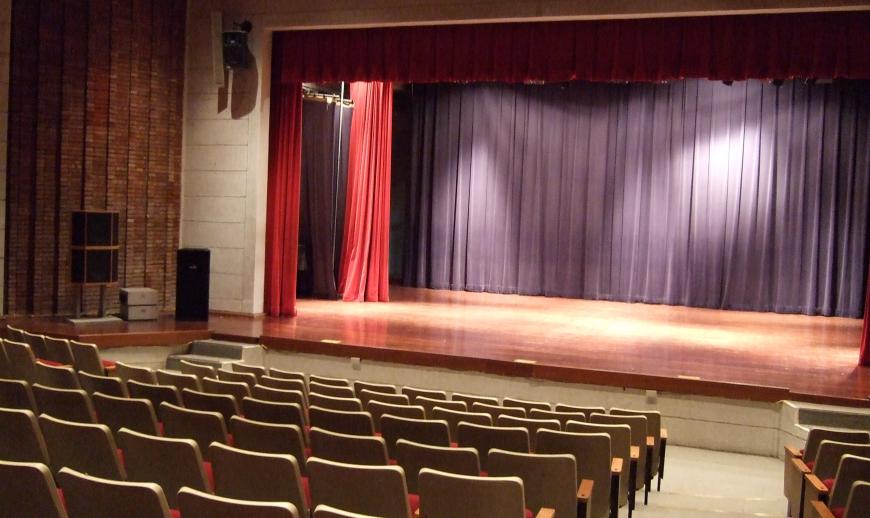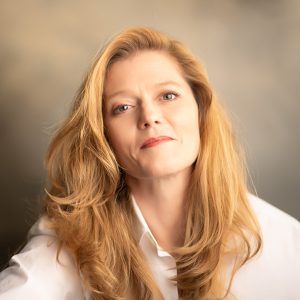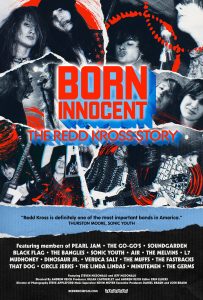Is There a Future for the Nonprofit Arts Model in the U.S.?

There is no question that the performing arts in America are in a state of flux. Organizations large and small are facing issues that, depending on whether solutions are found, could determine their survival or extinction.
In the post-COVID ecosystem, these issues include: reluctance from certain audience segments to return to the concert hall, shifts in ticket-buying models (particularly regarding subscriptions) that have made budgeting and program planning much more difficult, the need for inclusivity in the decision-making process, and troubles attracting younger audiences, nurturing patron relationships, and recruiting new, younger board members — all at a time when audiences have myriad online and streaming options to choose from.
At the same time, artists who agreed to salary concessions during the pandemic are demanding a return to pre-pandemic wage levels, which requires a cooperative relationship between management and unions.
California represents ground zero. At this moment, Los Angeles’ Center Theatre Group (The Music Center’s flagship theater company) is in such financial straits that the decision was made to shutter its second largest theater, the Mark Taper Forum, for an entire season, while construction in Culver City may result in a similar fate for the company’s third stage, the Kirk Douglas Theatre. This would leave CTG with only the Ahmanson Theatre, which is used as a rental house for Broadway touring productions. Clearly, the organization’s newly appointed artistic director, Snehal Desai, faces a very difficult and uncertain future.
The Los Angeles Philharmonic is financially solid, but its artistic and administrative future is yet to be determined. The orchestra’s superstar music and artistic director, Gustavo Dudamel, is heading for New York. Chad Smith, the organization’s former chief executive and programming wizard, left unexpectedly to become the president and CEO of the Boston Symphony. And at the end of the 2023–2024 season, the LA Phil faces the loss of some 20 principal players who are retiring.
At the San Francisco Symphony, a contentious labor negotiation just finished with a one-year settlement that only kicks the musicians’ salary demands down the road. The orchestra also has more than 20 vacancies, many for important positions such as associate concertmaster, associate principal second violin, and associate principal cello.
Some smaller-budget organizations, like the Santa Monica-based Jacaranda Music, which announced that this season will be its last, are teetering on the brink of insolvency. The reallocation of the San Francisco hotel tax fund in 2023 means that organizations like American Bach, Volti, Other Minds, Rova:Arts, Chamber Music San Francisco, San Francisco Bach Choir, San Francisco Chamber Orchestra, San Francisco Choral Artists, and San Francisco Contemporary Music Players were all zeroed out and received no funding for the first time, and without warning.
One could ask whether extinction is necessarily bad or just necessary. As Charles Darwin observed of selection pressures, “We need not marvel at extinction; if we must marvel, let it be at our own presumption in imagining for a moment that we understand the many complex contingencies, on which the existence of each species depends. … The appearance of new forms and the disappearance of old forms … are bound together.” Extinction and evolution march hand in hand.
Might the replacing of old models in the performing arts be a good thing that allows new, forward-thinking, flexibly adaptive organizations rooted in innovative performance models a chance to emerge?
“The concept of artistic Darwinism is a good one,” says Drew McManus, arts consultant and CEO of UpStage Technologies. “Approached from a position of pragmatic optimism, the type of change we’re seeing is normal. Every city has its own cultural ebb and flow and should not be compared to another. That being said, organizations that do not plan for change are going to have a difficult time. From a Darwinian standpoint, it’s one thing to know that evolution exists and another thing to study it down to the genome level. Those organizations that cling to communicating and selling what they do with traditional marketing and communication messaging are less likely to make it to the other side of this evolutionary stage in one piece.”
Jacaranda Calls It Quits; Wild Up Gets It Right
The musical landscape on the west side of Los Angeles was very different in 2003, when Jacaranda, the organization co-founded by Patrick Scott and Mark Alan Hilt, presented its first concerts in Santa Monica. The ground was fertile for a new musical organization to shine.
It began with an association with First Presbyterian Church of Santa Monica, which offered the fledgling organization an extended agreement that would provide an excellent concert hall with ample parking nearby. An emerging ensemble, the Denali Quartet (later the Lyris Quartet), became the series’ core musicians, in addition to pianists Gloria Cheng and Vicki Ray and along with other members of the CalArts faculty.
“We started with the idea that our programming should appeal to the church’s congregation, playing a lot of Mozart and Schubert.” Scott explains. “We quickly realized that was not why we were here. The second season we programed Lou Harrison’s Concerto for Violin and Percussion, as well as music by [John] Cage, [Silvestre] Revueltas, and the minimalist composers.”
The decision to focus on a more contemporary repertory attracted donations from major Los Angeles patrons, like Betty Freeman. This was also a time when Los Angeles had three daily newspapers (plus LA Weekly), which led to high-profile reviews from Mark Swed and Alan Rich. Press coverage provided much-needed notoriety. Audience attendance increased, and programming emphasized minimalist composers performed at the highest level. It was the perfect environment for growth, fueled by creative programming, the excellent performance space, and skilled musicianship.
In the years that have followed, Los Angeles has changed a great deal. Competing venues have opened, dividing a shrinking audience, while classical music press coverage has diminished to a shadow of what it once was.
Eventually, Scott points out dejectedly, income from ticket sales evaporated, once-reliable patron donations withered, and obtaining grants became more difficult. Then came COVID. The organization’s accumulated debt began to grow, and Jacaranda made the decision to contractually pay its musicians union scale. Finally, Scott says regretfully, the situation became untenable.
“COVID was a big wake-up call for the foundations and the government about how underfunded the nonprofit arts are,” Scott says bitterly. “They need to be going to smaller organizations with under-half-a-million-dollar budgets and stop gatekeeping support based on their financial reports. They want audited financial reports, and none of these groups can afford it. [An audit] costs about $3,000. That means that money is out the window just to apply.”
Is capitalism the wrong metric to apply to arts funding?
“Absolutely,” Scott replies without hesitation.
“It’s not an easy question to answer,” says McManus. “I don’t see the American government willing to commit enough money to the arts to ever effect a change. We have to find a way for government to fill the holes and some carrot incentive to attract the one-percenters. The problem is the ‘new money’ is less likely to fund nonprofit arts organizations. In the worst case, you end up with San Francisco, where there is this very large, very rich tech community that, by and large, doesn’t give very much to the nonprofit arts scene beyond what they can look good for doing.”
And then there is the musical collective Wild Up, which, after years of relying on a sustaining formula of extensive university touring and residency programs and only a small percentage of stage engagements, has emerged as one of the most popular and in-demand ensembles in California, having most recently accompanied the Martha Graham Dance Company for the launch of its centennial celebration at The Soraya in Northridge.
“There are so many good organizations that are suffering or, like Jacaranda, have been forced to stop all together,” says Wild Up’s founder, conductor, and artistic director, Christopher Rountree. “It’s a question of using old business models that may be outdated versus adopting a business plan that is more of the moment. Performing arts organizations are like so many Carnival Cruise liners. They can see the end of the world in sight, but they’re behemoths that are so hard to turn. In classical music, we’ve instituted these structures that make it difficult to maneuver. If you’re only dedicated to performing the historic repertory, you’re like the Metropolitan Museum of Art, instead of becoming MoMA. Wild Up was created with the idea we would be experimenting with classical music that questioned boundaries that were not being questioned [by other groups].”
The key component that has led to the success of Wild Up, Rountree emphasizes, is a policy of sharing the music-making process. “Community connections and building artistic partnerships is essential. The key is finding a space for yourself and then building something that’s lasting. We strive to connect with our community and keep our concerts affordable. The great thing is, thanks in no small part to the LA Phil’s Green Umbrella and “Noon to Midnight” performances, new music has become cool. It’s gone from being something — the European modernist model — that was deemed only worthy for insiders to being something young people can relate to, which began with minimalism. Wild Up’s audiences are younger, and their reach through social media is 10,000 times our reach.”
And then there’s Taylor Swift. As the nonprofit world shrivels in importance, mass media consolidates and grows more influential, and its stars grow ever more powerful, as the economic tidal waves accompanying the summer’s two largest concert tours, by Swift and Beyoncé, have demonstrated.
“I question the assumption that we [nonprofit-based musicians] have the smartest music and the best musical culture,” Rountree openly declares. “A lot more people like Taylor Swift and Beyoncé than us. You could make a case that they are making the best music at this moment because it’s moving the most people. How do we find an overlap and question what we’re producing so we can bring people together? Popular music as a field is growing, but classical music is shrinking. Audiences have totally come back for popular music. They’ve not come back for classical music. The fact that Taylor Swift’s fans can cause a 3.2-magnitude earthquake should tell you something.”
But is mass-media-produced popularity the right metric for organizations that are predominantly local and committed to staying adventurous? No matter how successful Wild Up is at presenting new music, that music is not as repeatable and formulaic as a pop song. Wild Up depends on exciting people about a type of live music experience that doesn’t offer the comfort of repeatable formulas. Every piece the group plays will be very different. So, contemporary classical musicians might need to reckon with the idea that their approach isn’t compatible with the existing model of mass-marketed music.
That doesn’t make their music, and the process of creating it, less valuable than the more saleable kind. The extremely creative classical musicians of today, who are actually quite well versed in the music of their pop counterparts, deserve to be supported even though they can never hope to sell out a stadium. There should be room in the musical universe for both.





